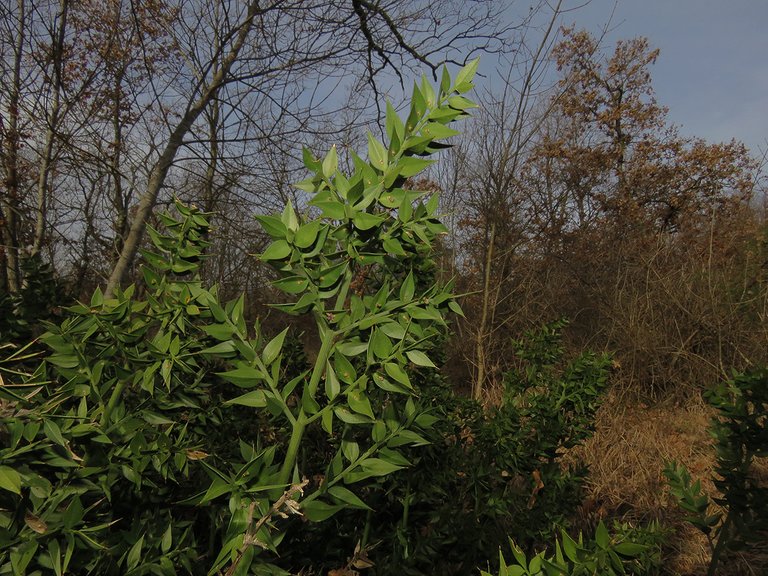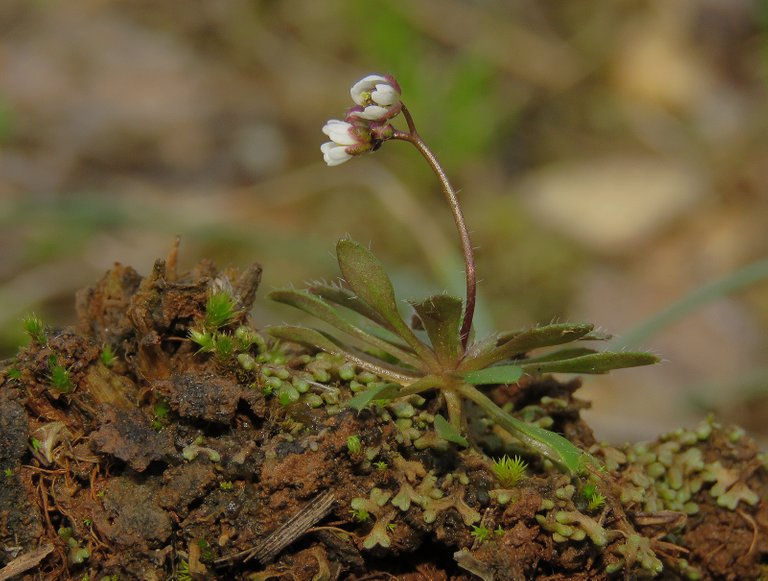The 24th of January this year was a surprisingly warm day after a series of chilly ones.
I spent an hour or two in the sparsely wooded area between the village called Kanfanar and the small city of Rovinj ...
... I unexpectedly found some wildflowers there ...

... and this is a post about that fairly warm winter experience.
The Brown leaves of the oak trees looked golden in the morning light.
The oaks have lost most of their foliage ...
... but the branches, especially the lower ones, weren't completely barren ...

... so I had plenty of photogenic material there, right at eye level.

The leaves that fell on the ground were also interesting subjects. Especially when seen in the backlight that accentuates the details of their structure.
Here you can see the work of some larva that was eating the leaf when the leaf was still green and attached to the tree.

This is the first flower I noticed in the grass under the trees.

A Crocus reticulatus flower.
A pale, almost pure white flower of that kind.

As you can see in the above photograph, the color of these flowers can be considerably more intense.
I like the shape formed by the branches of this oak tree. The natural sculpture stood out from the rest so it ended up in the post.

In this photograph, you can see the entire tree.
At one point, while rambling around the grove, I noticed a pretty large group of tiny white flowers.
I didn't have the macro lens with me, so I wasn't able to get very close, but you can see them well enough in this shot. These small flowers belong to the Draba verna plant.

After some more walking and sniffing around ...
... I came across this yellow flower ...
... of the Ficaria verna plant.

The evergreen shrub shown in the foreground of this shot is the Ruscus aculeatus. In the following photograph ...
... especially if you enlarge the picture by clicking on it, you'll notice a red fruit of the plant, and maybe, a tiny flower underneath the fruit. It looks like the flower has grown on the leaf, which is highly unusual. The leaf-like formations are called cladodes. They are made of the same tissue as the stems but have the function of the leaves, and just like ordinary stems they also carry flowers and then the fruits as well.

Here you can take another look at the scenery and the small oak trees in it. In this photograph, the focus is on the group of trees that have retained most of their dead foliage.

In some places, the branches of the trees were partially covered with lichens.

Here you can take a good look at the structure of the lichen from the genus Physcia of the Physciaceae family. With many very similar species present all around the world, can't tell you which one exactly is this. But about the genus and the family, I'm very sure.

Here you can see a lovely trio of dead leaves still attached to the twig on the tree, while in the following photograph ...

... you can take a look at the Taraxacum officinale plant down on the ground, surrounded by fallen leaves.
Not far from there, on the Crocus reticulatus flower, I found a fly from the Syrphidae family.
Now, this was a very surprising winter encounter. The fly was feeding on pollen. The name of the species is Episyrphus balteatus. The flower shown in this and the previous photograph is pretty pale.

Here you can see a slightly more blueish one. With each photograph, the color is getting more intense, and so in the following one ...
... you can see a lovely blue Crocus reticulatus flower.
These flowers were a nice surprise and I had plenty of fun photographing them.
You can see another pale one here.

And that's it. I don't know what else to say and I don't have anything else to show.

The following links will take you to the sites with more information about some of the protagonists of this post. I found some stuff about them there.
https://en.wikipedia.org/wiki/Crocus_reticulatus
https://www.bib.irb.hr/644509
https://en.wikipedia.org/wiki/Draba_verna
https://en.wikipedia.org/wiki/Ficaria_verna
https://en.wikipedia.org/wiki/Ruscus_aculeatus
https://en.wikipedia.org/wiki/Physcia
https://en.wikipedia.org/wiki/Episyrphus_balteatus
AS ALWAYS HERE ON HIVE, THE PHOTOGRAPHS ARE MY WORK.




























